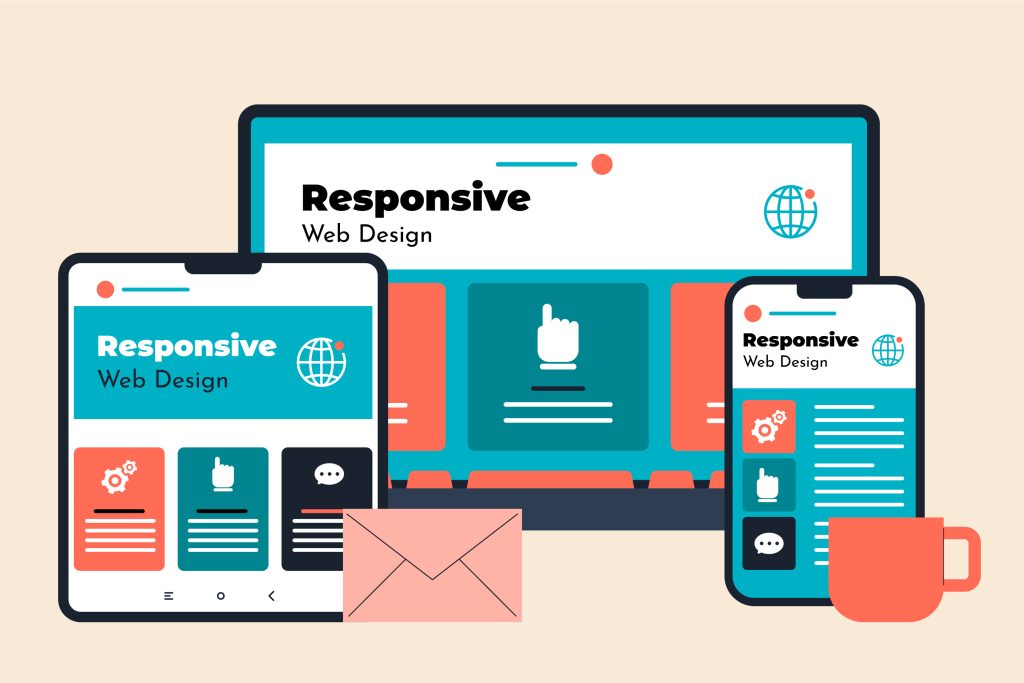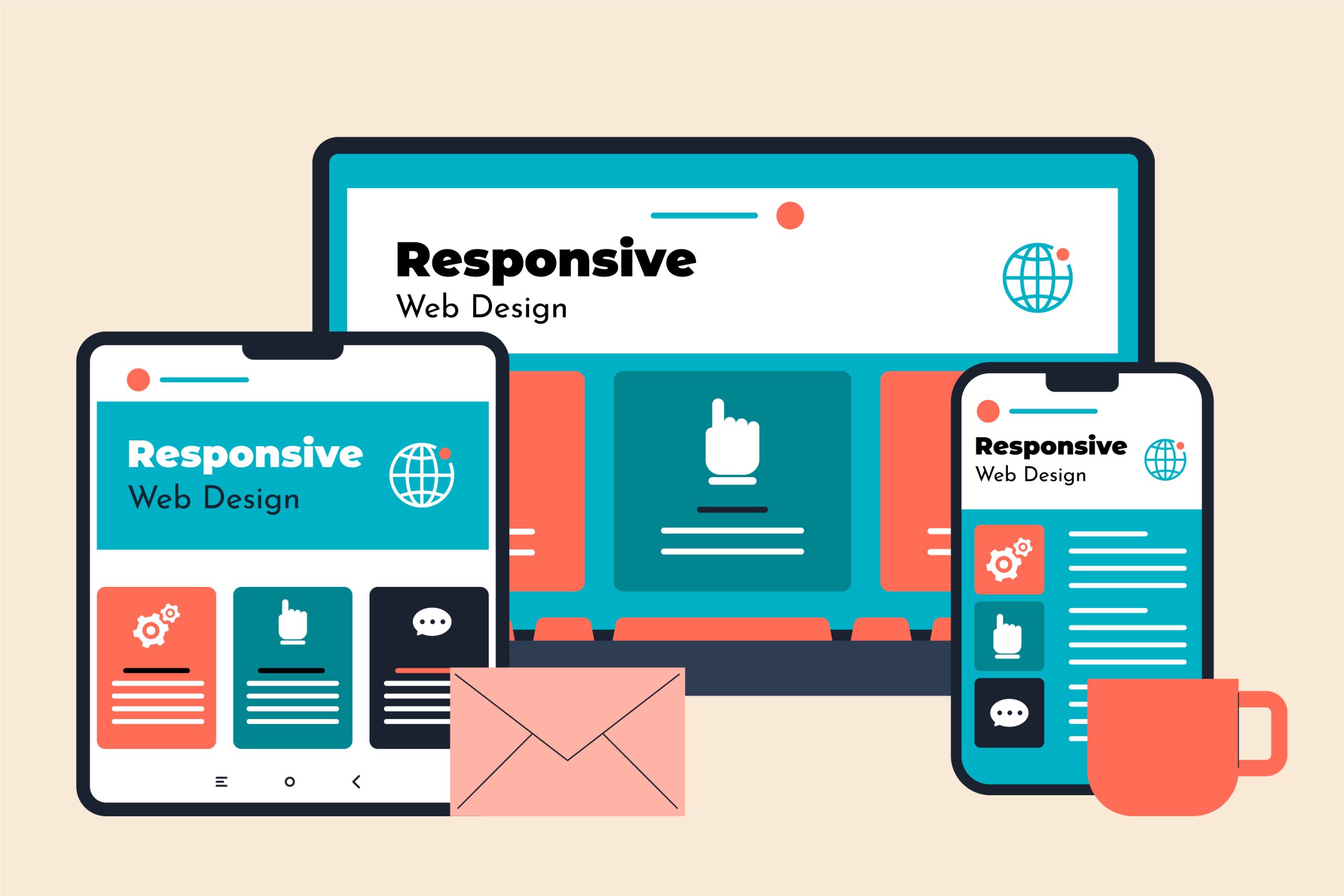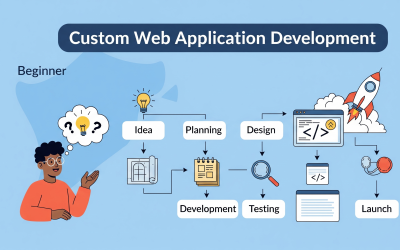Today, mobile devices are the most popular means through which users get their information from the internet. While businesses attempt to meet this challenge, it has become imperative to make your web app responsive to all devices. So how do you design for a single experience that can be delivered across any screen size? The answer is the responsive mobile app or responsive web app.
Here in this blog, we will explain why a Mobile Responsive Web App is vital and how it can help your business in a mobile-first environment.
Understanding the Power of Responsive Web Apps

As we have seen, it is crucial to embrace mobile-first trends, so it is high time to understand what is a responsive web app.
What Exactly is a Responsive Web App?
In layman’s terms, a responsive web app is one that is optimized to work equally well on mobile devices as well as on other gadgets. This is responsive to screen size, operating systems and browsers and hence is compatible with smartphones, tablet, laptops and desktops. This flexibility is critical in a world that is now mostly dominated by multiple devices.
Why Do Responsive Web Apps Matter?
Now that we know what a responsive web app is let us proceed to the question of why it is so vital. You might not know this but Mobile Traffic accounts for 59% of Global Web traffic. Furthermore, 57% of users will not recommend that business which has a bad mobile experience. These stats clearly point towards the need for an effective responsive mobile app which can sustain user engagement as well as satisfaction.
The Top Benefits of a Responsive Web App for Your Business
Now that responsive apps’ importance has been discussed, let’s turn to the advantages for your business.
1. Deliver a Consistent User Experience Across All Devices
A mobile responsive web app also ensures that the experience stays consistent as the users shift from their smart phone to their laptops. This makes the customer happy and loyal since he or she gets a familiar experience when interacting with the firm.
2. Boost Your SEO and Search Engine Rankings
As we have noted, user satisfaction is critical for a consistent experience, but the experience is also central to SEO. Mobile friendliness is one of the determining factors that Google and most other search engines use to rank websites. A ‘responsive’ web app development approach also means that a site is fully prepared for search engine crawls, which in turn leads to its better ranking and thus – more organic traffic.
3. Save Time and Money with Cost-Effective Development
Having looked at the SEO advantages let us also consider the cost efficiencies of responsive web apps. Why use several platform dependent apps while one can use a single responsive web app that will run on any device? This not only makes the development and maintenance of the application easier, but also cost effective for your business making it efficient and easy to scale.
4. Increase Customer Retention and Conversions
When it is clear that responsive web apps are financially beneficial for a business, it is crucial to address how these applications directly affect the target customers. With a responsive web app, one is developing an environment that will meet the needs of the users in the most appropriate manner irrespective of the device being used. It also brings higher engagement and more importantly conversion rates into the business. Well, nobody wants to be inconvenienced or bogged down by a process when he or she is ready to convert.
How to Build a High-Quality Responsive Web App?

With the benefits laid out, you’re probably wondering how to create a top-notch responsive mobile app. Let’s break down some essential practices for responsive web app development that ensure your app performs seamlessly across devices:
1. Adopt a Mobile-First Approach
First of all, when developing your app, you should always consider the mobile users. Mobile first approach helps to make sure that the most important features of your application are designed for small screens so that they can easily adapt to the large ones. This approach enhances performance on the mobile device, which is very important since majority of the web traffic comes from mobile users.
2. Flexible Grid Layouts
Always use flexible grid systems that will be more advantageous in handling different situations in different screen sizes. This means that the layout should be responsive and be able to adjust to the screen size and optimally arrange the content in a way that is easily accessible for the user. That can be solved with such frameworks as Bootstrap or Foundation, as they include responsiveness as one of their features.
3. Responsive Media (Images & Videos)
Make sure that when using images and videos, they are scaled, and can adjust their size to fit the screen. For images, use CSS properties like max-width: 100% and other methods such as srcset used in responsive image. Videos should also be placed in a container that has a size that is relative to the videos themselves meaning that the size of the videos will adjust to the size of the screen.
4. Touch-Friendly UI Elements
As most of the mobile devices are touch screen, make your buttons, links and other interactive objects touch friendly. Ensure buttons are big enough to be tapped and that they are well spaced so that you don’t click on the wrong one.
5. Optimizing Performance
One of the ways that have been considered as important in the retention of users, is the performance. Always optimize your images, reduce the JS and CSS files as much as possible and use the lazy loading mechanism for more media content. A faster loading app enhances the usability and satisfaction of customers hence improving on the rate of their retention as well as enhancing search engine ranking.
6. Cross-Device Testing
Once you have developed your responsive web app, it is important that you have to conduct several tests. Load the app on as many devices, operating systems, and browsers as possible to check its functionality on all of them. During this phase, BrowserStack or Google’s Mobile-Friendly Test can also be used in order to find and correct these problems.
Real-Life Success: Case Studies of Responsive Web Apps

As you now know the best practices, it is time to look at two case studies of businesses that have benefited from the adoption of responsive web apps.
- Alibaba – The global e-commerce giant Alibaba has recently redesigned its web app to become fully responsive to adapt to the constantly growing mobile user base. By adopting a mobile-first approach and enhancing its cross-device performance, Alibaba enhanced user experience drastically. The result? The mobile conversion rates went up by 76% as compared to the previous period. This growth has clearly had a direct relation with their responsive web app development strategy that offered a smooth shopping experience across platforms.
- BBC News – One of the most popular news websites on the planet, the BBC, migrated to a responsive web app to improve the experience across different devices. As such, they observed a significant boost in users’ activity level, namely, a 30-percent increase in mobile traffic. Also, there was a reduction in the mobile bounce rates of BBC proving that users were engaging more with the content because of the friendly interface which was responsive.
Conclusion
In conclusion, let me say that having a mobile responsive web app is not a luxury anymore, but a necessity for any business entity that is seeking to be relevant. For better SEO position, improved customer satisfaction, and long-term cost benefits, incorporating a responsive web app will be a plus to the growth of any business.




0 Comments